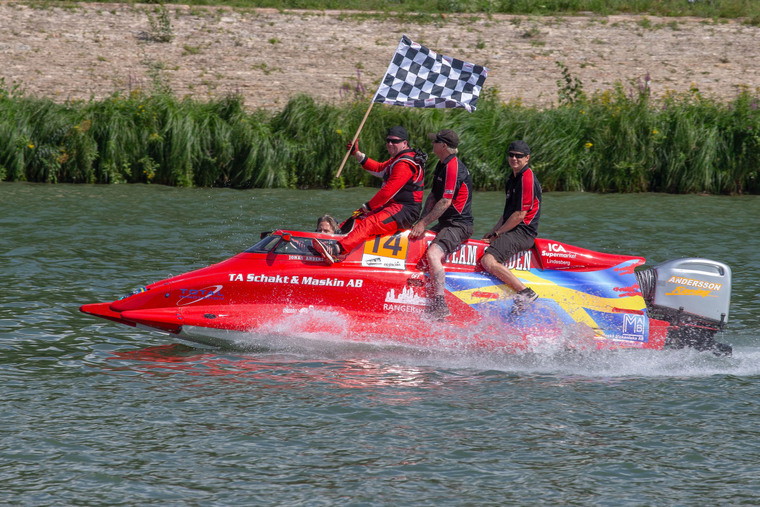


Friday, August 4: Following on from the success of this year’s inaugural Kopiko Grand Prix of Indonesia on Sumatra’s spectacular Lake Toba, the return to China for the Grand Prix of Zhengzhou and last week’s ground breaking announcement of the 2024 Grand Prix of Bình-Dinh-Vietnam on the breathtaking Thi Nai Lagoon in the city of Quy Nhon, South-East Asia is firmly at the forefront of the future of the UIM F1H2O World Championship.
We take a look back at the history of the region in the World Championship, as Indonesia and Vietnam look to catapult the series back into the world spotlight after the global Covid-19 lockdowns.
In the recent era of the UIM F1H2O World Championship, China has been the powerhouse nation behind races in the Far East, with the likes of Xiamen, Shanghai, Xian, Chongzhou, Shenzhen, Liuzhou, Linyi, Harbin, Xiangyang and Zhengzhou hosting occasional races since 1997.
Malaysia was included as the opening round of the series for the first time in February 2001. The city of Johor took centre stage on that occasion, in a season where Guido Cappellini managed to pip Francesco Cantando to the world title by just three points after 10 races. Twenty-three drivers started the race and there were 12 retirements, including Cappellini and the likes of Scott Gillman and Massimo Roggiero.
Victory in Malaysia fell to the talented Saudi racer Laith Pharaon in his Team Green DAC. That was the Saudi’s only win in a season where he finished fifth in the rankings behind Cappellini, Cantando, Philippe Dessertenne and Viktor Kunitch. A youthful Sami Seliö finished second and Cantando rounded off the podium places.
The Grand Prix of Malaysia moved to the capital Kuala Lumpur in 2002 and was held in August. Cappellini again won the 10-round championship in his Zepter Team DAC from Pharaon but was pipped to the Malaysian win by team-mate Roggiero. Gillman, Fabio Comparato and Cantando rounded off the top five.
The Malaysian capital again hosted the race in early October 2003 and a new event in Singapore was added to the calendar three weeks later. Cappellini pipped Gillman to the world title but the American got the better of his rival in Kuala Lumpur and repeated the feat in Singapore, only for Guido to seal the championship in Abu Dhabi when Gillman retired. Pharaon claimed the third step of the podium in Malaysia and Dessertenne was third in Singapore.
A 10-round championship in 2004 featured three races in South-East Asia and rounds in India and China. The Grand Prix of Singapore moved to mid-September and Gillman stormed to victory in one of his dominant World Championship-winning seasons. Dessertenne and Seliö rounded off the podium places.
The following weekend, the city of Purajaya hosted the Grand Prix of Malaysia and Comparato claimed the win from Cantando and Gillman, with Cappellini retiring for the second time in the space of a week.
South Korea entered the calendar at the end of October and the race was staged on Halloween to a new format as part of a move to bring powerboat racing to venues that could only accommodate a limited number of boats at one time. No points were awarded for the Match Race, which was held at the Misari Motorboat Racing Stadium in Hanam City, Kyongki province. Cantando set the fastest time from Cappellini and Gillman.
The 2005 series was fought out over just six races and the Grand Prix in Singapore counted as round three in mid-September. Cappellini failed to finish but went on to comfortably secure the world title. Cantando reached the chequered flag first to claim the 20 points in a race where Seliö was second and Dessertenne was third.
South-East Asia returned to the international calendar in February 2023 after an absence of 18 years. The Kopiko Grand Prix of Indonesia was an unmitigated success, attracted massive crowds and saw Poland’s Bartek Marszalek claim pole position and his first ever GP win. Seliö came home in second and Erik Stark was third.






